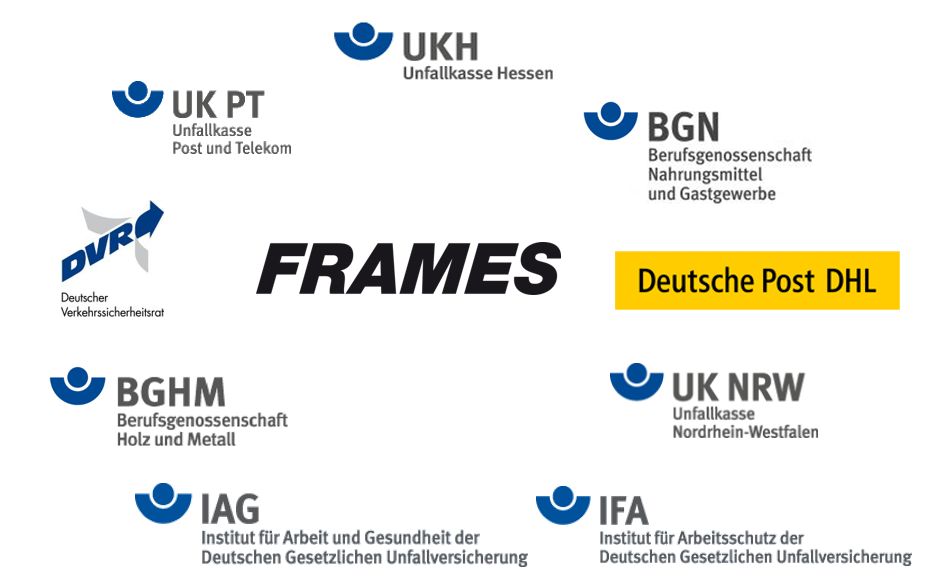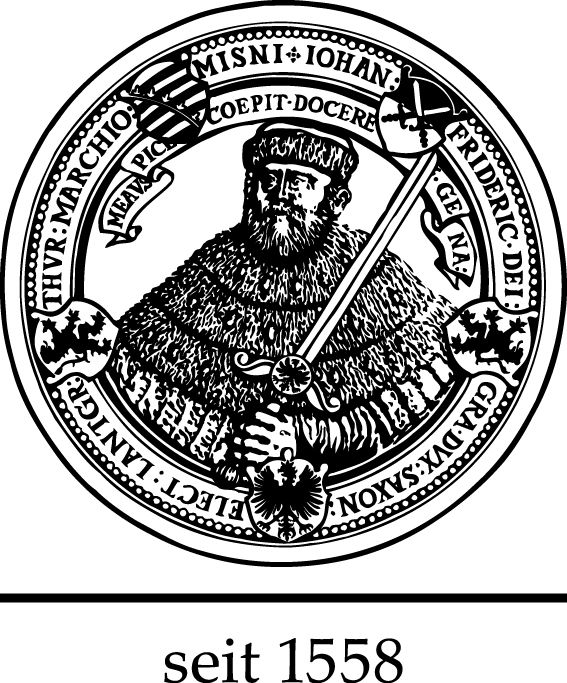FRAMES

FRAMES is supported by the Central Association of German Statutory Accident Insurance (DGUV e.V.) with financial and logistical support from the following institutions and companies

Introduction and overview
Great efforts are currently being made to optimise vehicle-to-vehicle communication to prevent accidents and increase traffic efficiency. Radio frequencies will be reserved throughout Europe and vehicles will be technically prepared to exchange early warning information on collision hazards and congestion from 2015. Unfortunately, all these procedures do not take sufficient account of vulnerable road users, pedestrians and cyclists. This is precisely where the FRAMES project comes in, to ensure that these target groups also benefit from technical progress in terms of safety.
A large number of traffic accidents occur when manoeuvring and reversing. Trucks, for example, reverse for loading and unloading, colliding with signallers, pedestrians, operators of a refuse compactor or colliding with other vehicles or objects. Pupils behave spontaneously and unpredictably and are often covered by obstacles, e.g. parked vehicles. Forklift accidents often happen because hazards are not detected in time. Current protection systems are based exclusively on sensors or cameras on the vehicle detecting and reporting the danger. Concealed persons, spontaneous movements etc. are not taken into account. FRAMES, on the other hand, is based on radio-based mutual information, so that vehicles receive warning signals even if the obstacles are covered, but pedestrians and cyclists themselves also receive feedback about a possible accident hazard, so that both road users can initiate protective measures.
However, the necessary technology must be extended and adapted to fulfil this task, while at the same time using the Europe-wide standards and planning for vehicle-to-vehicle communication (ETS ITS-G5, 802.11p). This is the part of the project that the htw saar traffic telematics research group is taking over. In order for the programming behind the early warning system to achieve the right balance between real and false warnings, between too many and too few signals and for rapidly changing behaviour, it is necessary to predict the behaviour of road users as accurately as possible and to map it in such a way that the drivers are not flooded with signals or receive too few. In addition, there is a high probability of risk adaptation, i.e. drivers, cyclists and pedestrians feel safe because they do not receive a signal and drive faster or more inattentively overlooking people or vehicles without transponders. Research into these behavioural data and prevention measures is carried out by the Department of Industrial, Industrial and Organizational Psychology at FSU Jena.
This interdisciplinary approach offers the opportunity to use state-of-the-art technologies at an early stage to protect weaker road users. One of the benefits for the accident insurance institutions (UVT) is that a new technology can be used for the prevention target groups of almost all UVTs, because manoeuvring and transporting affects everyone as well as pedestrian and cyclist traffic. Further benefits for accident insurers are that they can use and even help shape technology currently being developed at great expense for safety purposes at an early stage. Another benefit for employers is that, in addition to preventing personal injury, the technology can also be used via stationary systems to prevent property damage. For the public sector, the very important issue of accident prevention for schoolchildren will be provided with a further, technical protective instrument that can use widespread technology, e.g. mobile phones, with relatively little effort in such a way that it contributes to protection.
Idea
- Inclusion of VRUs (vulnerable road users, especially pedestrians, cyclists) in existing ITS environment
- Active warning of VRUs in hazardous situations to give them the possibility of hazard avoidance
- Problem-solving approach for blind spot, occlusion, intersection situation
- Independent positioning for pedestrians (not dependent on vehicle sensors) provides information and warning of potentially dangerous areas
- Use of existing technology for information transfer
- Vehicle system integrates into existing V2X architecture (standard conformity)
- VRU system uses current mobile devices as system basis (smartphone as application unit and HMI)
Traffic psychology part by the University of Jena
Parallel to the technical development of the protection system, the collection and analysis of data for the traffic-psychological examination of the research objects takes place. Among other things, operational observations are carried out to identify potential hazards and their boundary conditions. In addition, test persons are observed in traffic simulations and their behaviour is recorded and analysed.
Focus:
- Findings on behavioural causes of accidents, near misses and general patterns of movement
- Analysis of specific pedestrian hazards
- Behavioural adaptations, risk patterns, user acceptance
In a further step, the knowledge gained in this process will be fed back into the development of the VRU protection system.
Link to the Project movie. https://www.youtube.com/watch?v=QYUfLyVv4Es
Project duration
01.11.2011 – 31.12.2017
Project partners
